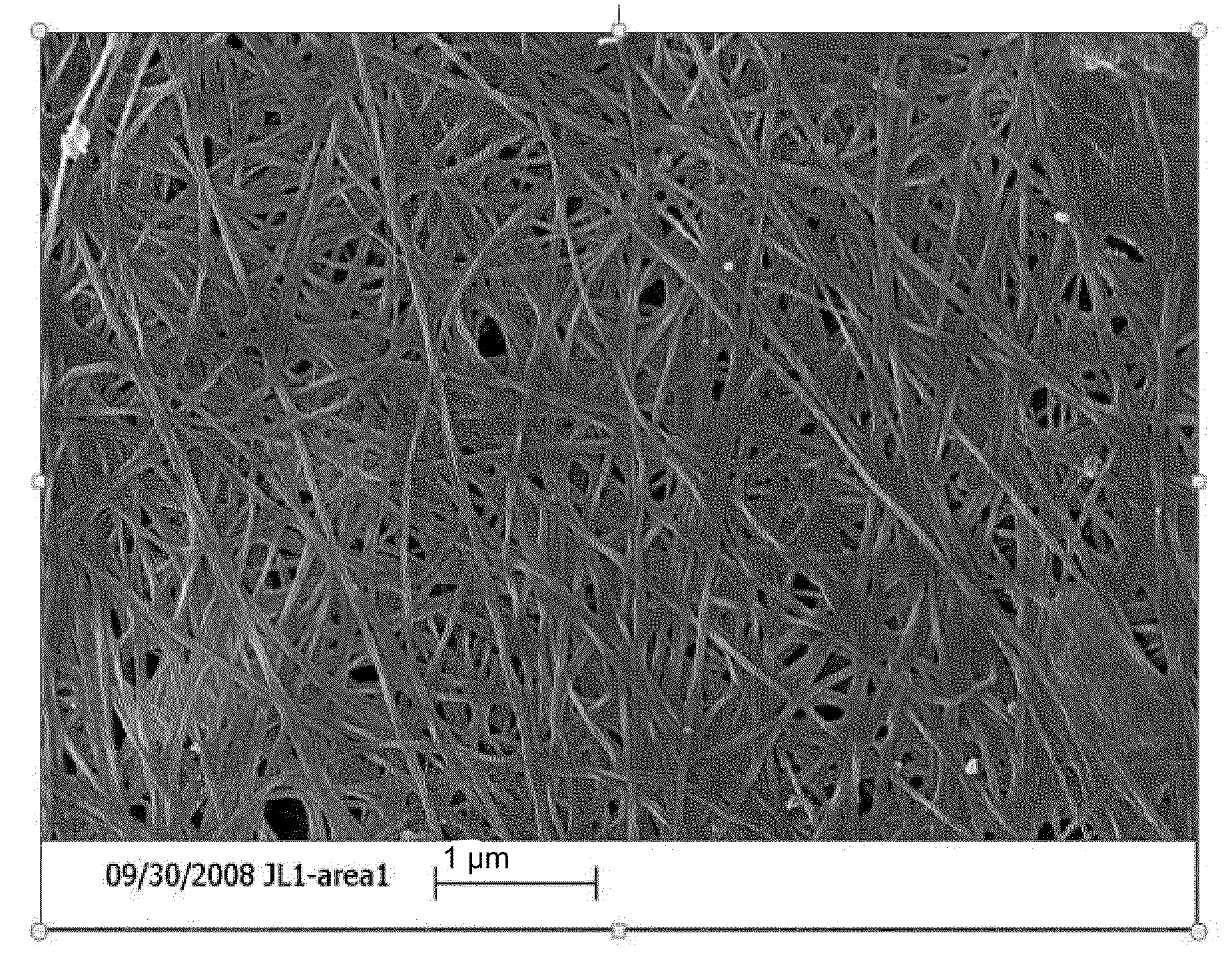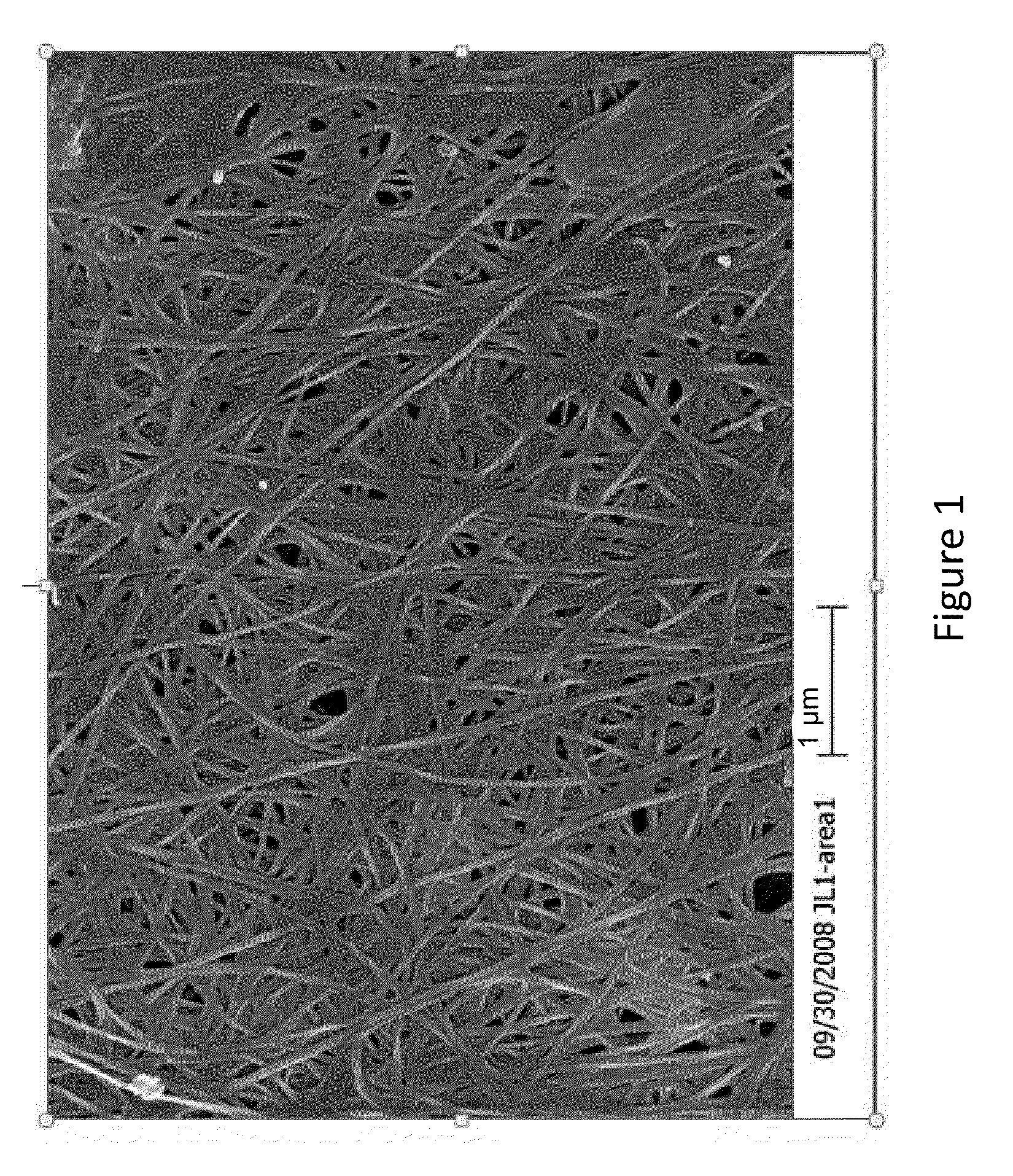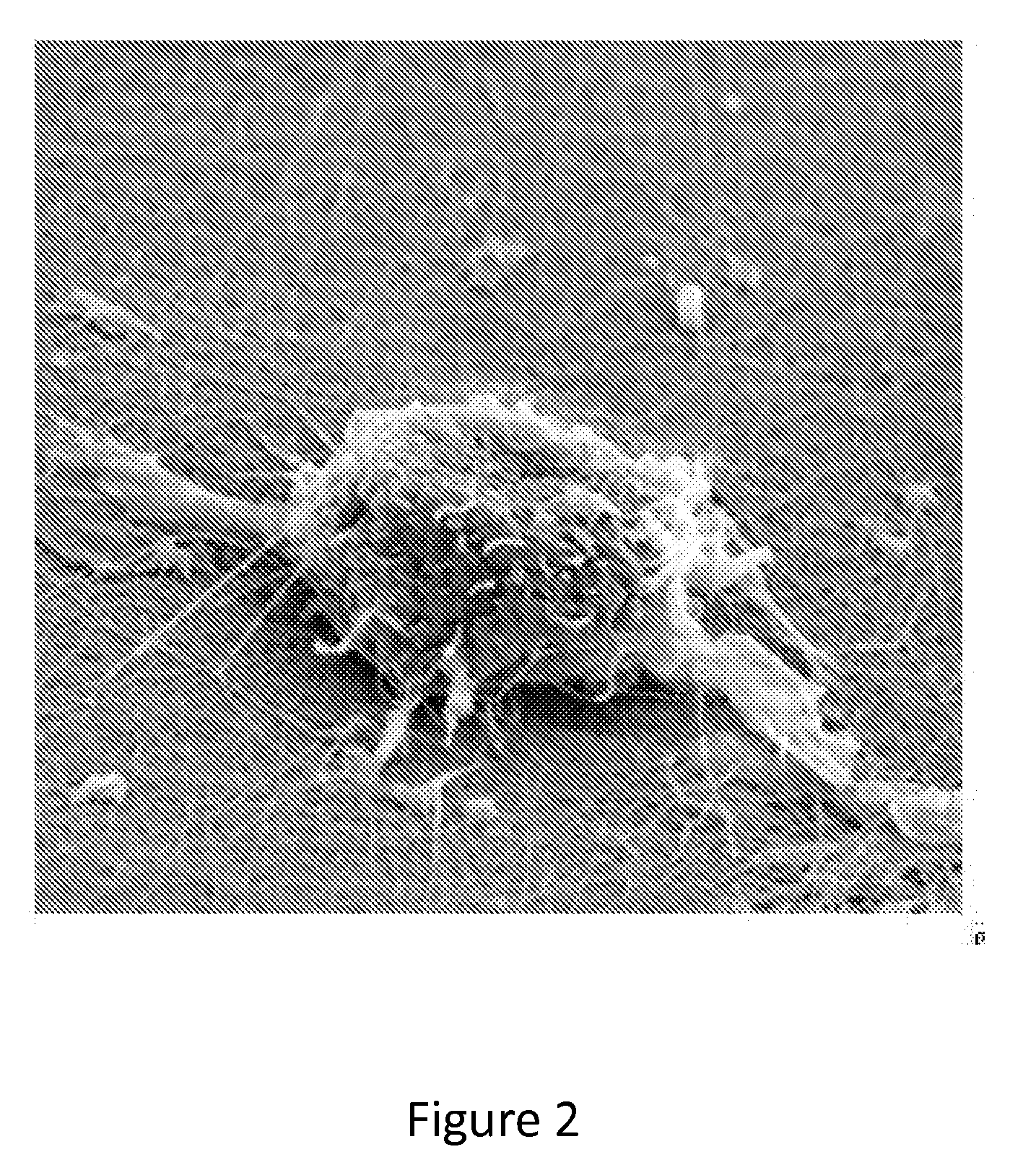Osseointegrative meniscus and cartilage implants based on beta-glucan nanocomposites
- Summary
- Abstract
- Description
- Claims
- Application Information
AI Technical Summary
Benefits of technology
Problems solved by technology
Method used
Image
Examples
example 1
Biomimetic Design of Cartilage
[0047]Cartilage tissue is composed of collagen nanofibrils, proteoglycans, glycoproteins, and chondrocytes. The major component is collagen. Cartilage has high water content (about 70%). FIG. 5 shows the morphology of cartilage with 4 different zones visible. FIG. 6 shows how control of bacterial fermentation can be used for preparation of cartilage replacements. Four different zones similar to native meniscus design can be prepared by designing a bioreactor that will affect the fermentation process. Using a bioreactor that has a solid substrate that is porous to oxygen, one can supply a regulated amount of oxygen to cells growing on the bioreactor, which allows high concentrations of cellulose to be produced. For example, high concentrations of cellulose can be produced close to porous glass capillaries that deliver oxygen to Acetobacter xylinum bacteria growing on the substrate that the capillaries form a part of. The high concentration of cellulose p...
example 2
Introduction of Calcium Into Scaffolds
[0052]In this study, a cartilage β-glucan nanocomposite implant was modified by adsorption of carboxymethyl cellulose, CMC, in the presence of 0.01 M CaCl2. After CMC treatment, CMC modified (β-glucan nanocomposite at different conditions such as concentration of CMC, time of treatment, temperature of treatment was then exposed to Simulated Body Fluid (SBF) in static conditions for 1 week. The amount of crystals grown and composition was determined using XPS. It was found that pretreatment of a β-glucan nanocomposite had a large effect on crystal growth. At certain conditions, such as 1 week exposure of nanocomposite to SBF solution at 37° C., growth of nanocrystals with ratio Ca:P of 1.75 was achieved. This ratio is close to the chemical composition of hydroxyapatite (1.66).
[0053]The effect of calcium phosphate on cells was investigated with regard to osteoblastic differentiation of bone marrow stromal cells (BMSCs). It was found that the prese...
example 3
Mimicking Meniscus Morphology Using Bacteria to Produce
[0054]Implants
[0055]Meniscus has the major function of providing stability for the knee joint and protecting cartilage from degeneration (e.g., osteoarthritis). Meniscus is composed mostly of collagen fibrils and water. There are two types of collage fibrils, collagen I and II. The major contribution to the mechanical properties of the meniscus is due to the presence of circumferential collagen I fibrils. The meniscus is attached to the bones through the horns of the meniscus. A bioreactor was designed (see FIG. 8) in which a meniscus implant based on (β-1→4-glucan nanocomposite is produced. The outer part of the meniscus has cavities that are produced as a result of growth of bacteria and deposition of glucan units around, but not within, rod-like structures present on the solid substrate. Upon removal of the structures, cavities remain, which can be used for various purposed, including as points for suturing of the composite t...
PUM
| Property | Measurement | Unit |
|---|---|---|
| Structure | aaaaa | aaaaa |
| Compressibility | aaaaa | aaaaa |
Abstract
Description
Claims
Application Information
 Login to View More
Login to View More - R&D
- Intellectual Property
- Life Sciences
- Materials
- Tech Scout
- Unparalleled Data Quality
- Higher Quality Content
- 60% Fewer Hallucinations
Browse by: Latest US Patents, China's latest patents, Technical Efficacy Thesaurus, Application Domain, Technology Topic, Popular Technical Reports.
© 2025 PatSnap. All rights reserved.Legal|Privacy policy|Modern Slavery Act Transparency Statement|Sitemap|About US| Contact US: help@patsnap.com



